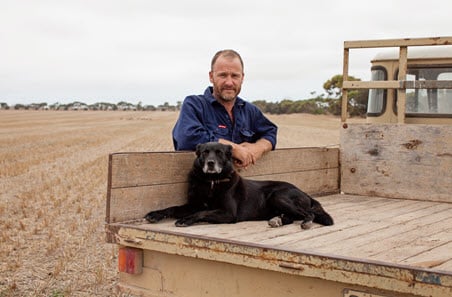Decades of refining the mix

Matthew Pointon’s family has been running a mixed farming business on ‘Ballater’ for almost 130 years, so they’ve got a bit of experience balancing cropping and livestock.
Matthew operates the farm business with his wife Susan and parents John and Karen in the Curramulka district of South Australia’s Yorke Peninsula.
They have been benchmarking for several years and were happy to contribute data to ‘The profitable integration of cropping and livestock in Southern Australia’ project, representing the SA high-rainfall zone. The project studied data from 100 mixed enterprises in WA, SA, Tasmania, Victoria and NSW. It found the top 20% of mixed farming producers were retaining almost 30% of turnover as net profit, while the remaining 80% were retaining less than 10%.
Agribusiness consultant Simon Vogt from Rural Directions helped coordinate the project and said the superior profitability achieved by top 20% producers was a function of four profit drivers, which are:
- gross margin optimisation
- developing a low-cost business model
- people and management
- risk management
Benefits of mixed enterprise
Matthew Pointon said in their case, a mixed enterprise was a profitable and sustainable system – both agronomically and economically – and fitted with the family’s attitude to risk: climatic, financial and agronomic.
“As with every farming system, it takes some refinement to get the systems balanced, and of course they’re constantly evolving due to rotations, improvement in practices and the like," he said.
“The biggest challenge for us is labour: there’s no doubt livestock require a lot of labour. There’s always something needing to be done with livestock, and usually when you would prefer to be doing something else.”
Matthew said the biggest benefit of having livestock in the mix was that they provided a risk management tool, on a number of levels.
“Livestock represent a different money stream,” he said.
“While the livestock market is connected to the grain market in some ways, it is separate, so there’s potential for one to be down while the other is up, which spreads our financial risk.
“On a day-to-day level, stock do well on our country and we use them agronomically for stubble management and, particularly at the moment, for mouse control. Mice can be a big issue and last year we found paddocks where we grazed stubble fairly early didn’t get as damaged by mice later on.”
Doing your sums
Being involved in the mixed enterprise project reinforced for Matthew the importance of having data to back up decisions.
“The project gave me a better understanding of where our dollars go and therefore better decision-making tools,” he said.
“We had to make some decisions in our Merino enterprise last year, due to climatic conditions and, having just taken part in the project, I had accurate data and knowledge fresh in my mind.
“Having that data, and knowing it was good, meant I could make those decisions with confidence.”
Matthew’s tips for mixed enterprise in the SA high-rainfall zone:
1. Be flexible
It’s good to plan, but locking yourself in to a set plan can be a problem when it can all be undone by climate, or some other risk factor, pretty quickly. Being able to react to changes and risks is a big plus.
2. Know where your money goes and where it comes from
This goes hand-in-hand with having a flexible program. If you’re thrown a big challenge, understanding the numbers means it’s a lot easier to make decisions.
3. Make timely decisions
Identify trigger points early and, when you hit them, make a decision and act. Again, being flexible and understanding the numbers will make decisions easier.
More information
To find out more about the project contact Simon Vogt:
T: 08 8841 4500
Email Simon Vogt



